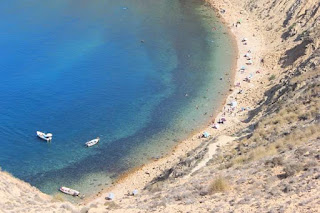City of Tetouan
 Old Tetouan The city of Tetouan is located in Morocco, specifically in the great countryside on the shores of the Mediterranean Sea. It is confined to the mountains of the countryside and Jebel Darsa. It is called the White Dove. The reason is that there is a stone statue of a white dove in the middle of the city. Which the city has witnessed over the past centuries but still retains its old Andalusian character. Information on the ancient city of Tetouan The population of the city of Tetouan The population of the city in 1971, about 141,620 people, and rose in 1982 to 205,246 people, and continued to rise until it reached in 1994 to about 277,516 people, and the latest statistics in 2014 AD The population of Al-Badr was about 320,539. Thus, the annual rate of population growth between 1971 and 1982 was 3.39%, while between 1982 and 1994 it dropped to 2.55%. Statistics showed that the population growth in the city's small urban areas was much higher than that in rural areas, and that its population density was higher than the general density of the State of Morocco, due to internal migration to the agricultural sector. Tetouan City The city of Tetouan is located on the shores of the Mediterranean Sea. It is known for its Mediterranean, moderate and rainy climate during the winter season, and the heat and drought during the summer. History of the City of Tetouan The history of the city of Tetouan dates back to ancient times. A Roman city was found on the western side of the city, known as Tamouda, which dates back to the third century BC and was destroyed in the year 40 AD after the Edmon revolution. The new city dates back to the fifteenth century AD, when Granada Sidi Ali al-Maqari built it after the destruction of Granada in 1492 by the Catholic monarchs Ferdinand and Isabelle. It was then inhabited by a large number of Muslims and Jews fleeing Granada. Thereafter witnessed prosperous periods of reconstruction and growth In various fields, making it an important center for the remains of Andalusian civilization. With the outbreak of hostilities between Spain and Portugal during the sixteenth century and the seventeenth century, the city's residents worked to surround them with walls and castles allocated and equipped to protect the city from any external threat, which contributed to the prosperity of urbanization, and in the eighteenth century turned into an important station for traders coming from Europe to Morocco, and was one of the most important African ports and the most famous.
Old Tetouan The city of Tetouan is located in Morocco, specifically in the great countryside on the shores of the Mediterranean Sea. It is confined to the mountains of the countryside and Jebel Darsa. It is called the White Dove. The reason is that there is a stone statue of a white dove in the middle of the city. Which the city has witnessed over the past centuries but still retains its old Andalusian character. Information on the ancient city of Tetouan The population of the city of Tetouan The population of the city in 1971, about 141,620 people, and rose in 1982 to 205,246 people, and continued to rise until it reached in 1994 to about 277,516 people, and the latest statistics in 2014 AD The population of Al-Badr was about 320,539. Thus, the annual rate of population growth between 1971 and 1982 was 3.39%, while between 1982 and 1994 it dropped to 2.55%. Statistics showed that the population growth in the city's small urban areas was much higher than that in rural areas, and that its population density was higher than the general density of the State of Morocco, due to internal migration to the agricultural sector. Tetouan City The city of Tetouan is located on the shores of the Mediterranean Sea. It is known for its Mediterranean, moderate and rainy climate during the winter season, and the heat and drought during the summer. History of the City of Tetouan The history of the city of Tetouan dates back to ancient times. A Roman city was found on the western side of the city, known as Tamouda, which dates back to the third century BC and was destroyed in the year 40 AD after the Edmon revolution. The new city dates back to the fifteenth century AD, when Granada Sidi Ali al-Maqari built it after the destruction of Granada in 1492 by the Catholic monarchs Ferdinand and Isabelle. It was then inhabited by a large number of Muslims and Jews fleeing Granada. Thereafter witnessed prosperous periods of reconstruction and growth In various fields, making it an important center for the remains of Andalusian civilization. With the outbreak of hostilities between Spain and Portugal during the sixteenth century and the seventeenth century, the city's residents worked to surround them with walls and castles allocated and equipped to protect the city from any external threat, which contributed to the prosperity of urbanization, and in the eighteenth century turned into an important station for traders coming from Europe to Morocco, and was one of the most important African ports and the most famous.



Comments
Post a Comment